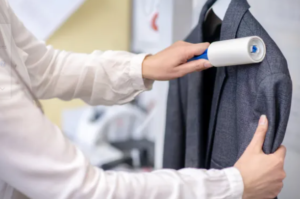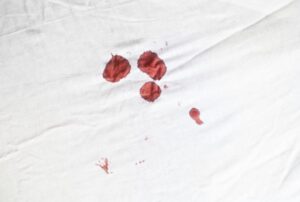Bleach – What it is and how it is made
Bleach is a liquid chemically created to disinfect the bathroom, floors and other surfaces, it can also be used to whiten clothes, this is what most people know but what few people know is that bleach is a product found in the inside of our body too. Below at FoxWiki we explain many things about bleach: the chemical principle that supports it, the different ways there are to say bleach in Spanish, the characteristics of bleach and what to do if it touches your eyes or delicate places.
Chemical principle of bleach
Sodium hypochlorite or sodium hypochlorite is a chemical compound whose formula is NaClO. It contains chlorine in the +I oxidation state and is therefore a strong and economical oxidant. In aqueous solution it is only stable at basic pH. When acidified in the presence of chloride, it releases elemental chlorine. For this reason it should be stored away from any acidSynthesisSodium hypochlorite (together with sodium chloride (salt)) is conveniently obtained by dissolving elemental chlorine in an aqueous soda solution in a dismutation reaction:2 NaOH + Cl2 -> NaClO + NaCl + H2O .
Ways to say bleach
What is popularly known as bleach is also called in some countries as bleach water or Javel water.
Properties of bleach
The properties of bleach are known to everyone and it is a widely used product for cleaning and whitening. Due to this characteristic it destroys many dyes, which is why it is used as a bleach. In addition, its disinfectant properties are used.
Origin of bleach
Bleach is a chemical compound called sodium hypochlorite, dissolved in water. It was developed by the Frenchman Berthollet in 1787 to bleach fabrics. Then, at the end of the 19th century, Louis Pasteur verified its incomparable disinfection power, extending its use to the defense of health against germs and bacteria.
Properties of bleach
Bleach is a corrosive product that must be treated with care because it is harmful to health and therefore must be kept out of the reach of children and must always be handled with great care using gloves. Its corrosive action can damage stainless steel if used in high concentrations and for a long time. It also spoils clothing if it is used as a bleach too frequently, turning the white color into a grayish color. Bleach is not suitable for washing nylon, silk or wool because it destroys them. For this reason, it is advisable to use commercial products that have the appropriate concentrations for each use and that are not so dangerous to handle. If you want to whiten a cotton garment to achieve special effects, you can apply bleach to it, but as soon as you have achieved the desired effect, you have to neutralize the chemical reaction of the bleach in the fabric, immersing the garment in a solution of water and vinegar (200ml of vinegar in 1 liter of water) and then washing it with water with neutral soap (3 to 5 g of pure soap flakes in 1 liter of water). However, despite how powerful bleach is, its corrosive action disappears as it acts and it ends up decomposing into salt and water. The bleach that goes down the drain will continue to perform its cleaning action until it loses all its corrosive and antiseptic power. For that reason it does not affect the environment.
How to deal with bleach poisoning
In general, to counteract the action of bleach, only cold water should be used. In cases of accidental ingestion, vomiting should not be induced, but rather large amounts of cold water, milk, ice cream or antacids should be used to neutralize it and call a doctor to provide appropriate attention. If bleach has gotten on the skin or in the eyes, it should be wiped or washed with plenty of water for at least 15 minutes. Some combinations of bleach with bleach or some powdered cleaning products and ammonia can release chlorine that can cause suffocation.
If you want to read more articles similar to Bleach – What it is and how it is made we recommend that you enter our Home Cleaning category.







